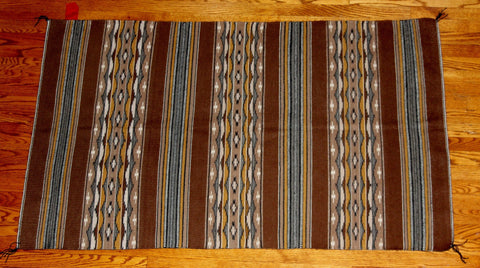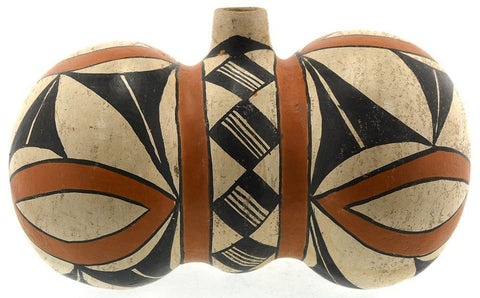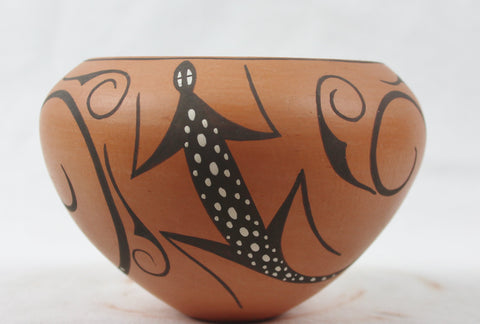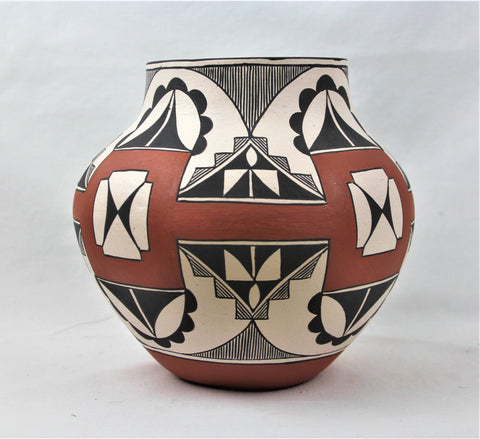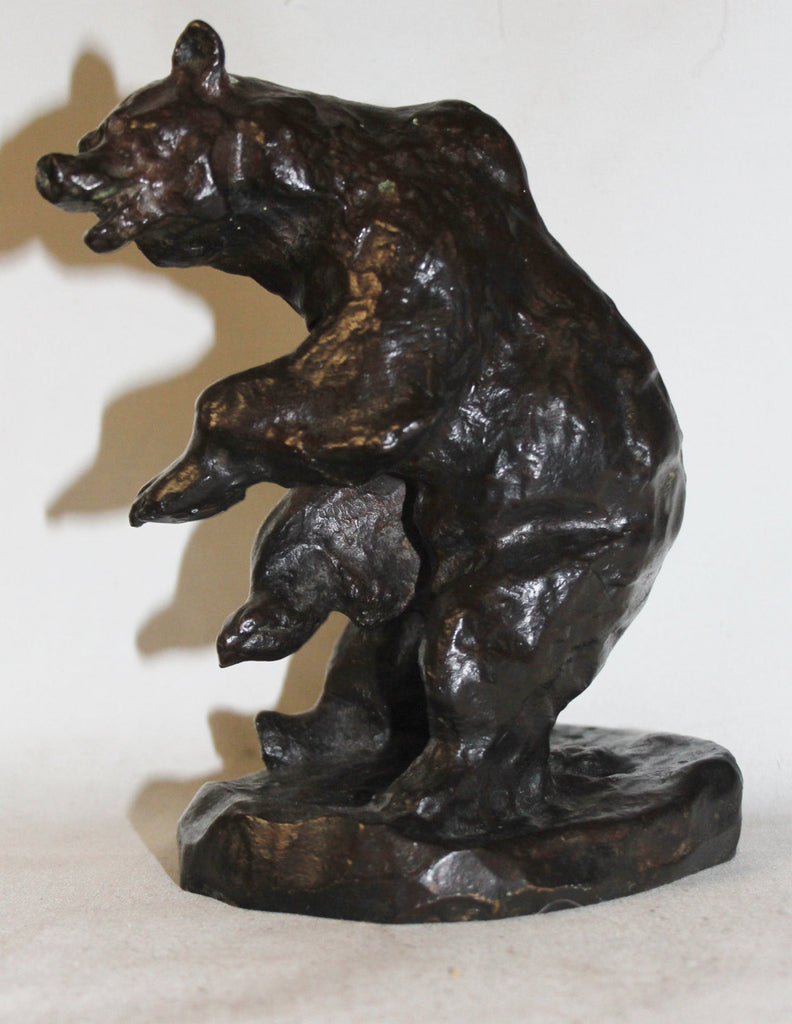
Bear Sculpture : Charles Marion Russell Bronze Sculpture of a Grizzly Bear #532 Sold
$ 2,340.00
Bear Sculpture
532. Description: Charles Marion Russell (1864 -1926). AMERICAN BRONZE SCULPTURE OF BEAR After Signed Russell, numbered 4/15, stamped. Measures 7" H x 5" W. From an estate in South Beach Florida. In excellent condition with a very fine patina. As normal, the piece does not come with a base.
Charles M. Russell-1864 -1926:
Betwine the pen and the brush there is little difference but I believe the man that makes word pictures is the greater.Charles M. Russell letter to Ralph S. Kendall, November 26, 1919
Charles Marion Russell was an accomplished painter, sculptor, illustrator, and a gifted storyteller. Russell was born March 19, 1864, in St. Louis, Missouri, on the edge of the burgeoning western frontier. As a boy, he crafted his own expectations of the American West by filling his schoolbooks with drawings of cowboys and Indians. Shortly before turning 16, he arrived in Montana, where he spent eleven years working various ranching jobs. He sketched in his free time and soon gained a local reputation as an artist. His firsthand experience as a ranch hand and his intimate knowledge of outdoor life contributed to the distinctive realism characteristic of his style.
In his Self-Portrait, painted in 1900, Russell stands with his feet planted solidly and his hat tipped back; he portrays himself as a stalwart yet open person. He wears the red Metis sash and custom made high-heeled riding boots that were a mark of his individuality, just as much as his quick wit, laconic speech, and gift as a raconteur exhibited in his humorous short stories and illustrated letters. Russell wrote, I am old-fashioned and peculiar in my dress. I am eccentric (that is a polite way of saying you're crazy). I believe in luck and have lots of it_Any man that can make a living doing what he likes is lucky, and I'm that. Considered a sensitive, modest, and unassuming man, Russell simply saw his great talent as merely luck.
In September 1896, he married Nancy Cooper, who became his business manager. Under her support and guidance, Russell gained national recognition and successfully marketed his art. Russell learned from observation, and his art improved dramatically after 1903 when he and Nancy began making regular visits to New York. It was here that Russell began working with a group of experienced illustrators, where he enjoyed being part of an artistic community something he lacked back home in Montana.
Russell painted and sculpted in his log studio adjacent to their Great Falls home, filling it with his vast collection of Native American and cowboy objects. Russell completed all of his major paintings in the studio after it was constructed in 1903. Having the talent to successfully work in many mediums, Russell created whimsical wax animals and clay and plaster figures, but he also made more formal sculptures, many of which were cast in bronze. Russell enjoyed modeling animal figures on oddly-shaped roots or branch fragments. Mountain Mother captures the playful nature of the cubs and the watchful, protective instinct of the sow.
Painting in a time when there was considerable interest in the West, Russell's works were popular because of their narrative subject matter, unique style, and dynamic action. In addition, he had the ability to paint fictional history.
American Indian women played important roles in a number of Russell paintings, such as Indian Women Moving Camp, and he produced several versions of the subject. The seasonal rounds of Plains tribes provided the artist with the opportunity of depicting the Indian women proudly riding on horseback. He used a com-positional group placed at a slight diagonal to the picture plane that is similar to his subject of Indian warriors. Thus he accords the same dignity to the women's work and reveals his admiration for the resourcefulness, independence, and courage of Plains Indian women.
Charlie Russell became not only the favorite son of his home state of Montana, but also the personification of the West itself. He wanted little to do with the present and nothing to do with the future, and chose to celebrate and romanticize only the traditions and virtues of the West as he envisioned it. He wanted it known that he had taken part in the Old West, and was a better man for it. Even as an internationally-known western artist, Russell cherished far more than his skills, his friendships and his place as a peer among common people.
Russell completed approximately 4,000 artworks during his lifetime. Living 46 years in the West, he knew his subject matter intimately, setting the standard for many western artists to follow. Charles M. Russell died in Great Falls, Montana, on October 24, 1926.
Charles Russell was William E. Weiss's (1913 - 1985) favorite artist, and he appreciated Russell's dedication to preserving the Old West. Weiss's many special gifts of Russell artwork can be enjoyed in the Whitney Western Art Museum. ( Buffalo Bill Center of the West)

